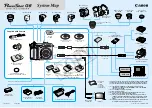
C10910 INSTRUCTION MANUAL Ver.1.19E
15
.
Gating:
This is an operation carried out in order to render the streak camera temporarily insensitive. If
light positioned before and after the measured light is entered to the streak camera, the
photoelectrons produced by that light will be scattered and multiplied inside the streak tube,
which causes optical noise to appear on the streak image, and lower the S/N of the streak
image. In order to prevent this problem, the streak camera is equipped with a cathode gate
which blocks the photoelectrons produced on the photocathode and an MCP gate which
stops electrons from being multiplied in the MCP.
MCP Gate:
Disturbance light can be reduced by applying the voltage which determines the
MCP GAIN.
Photocathode Gate:
Disturbance light can be reduced by applying the voltage between the photocathode
and the accelerating electrodes.
Gate Modes:
NORMAL (Normal Mode):
When a single-sweep streak unit is being used, this obstructs the light during the
return sweep.
GATE (Gate Mode):
When a single-sweep streak unit is being used, the gate opens when a gate trigger
is received, and closes when the sweep has been completed.
EXT. (External Mode):
When a single-sweep streak unit or a synchroscan streak unit is being used, the
gate opens and closes in response to pulses input from the gate trigger connector.
H
Horizontal Blanking:
When a single-sweep unit is being used, pulses synchronized to the sweep are applied to the
horizontal electrodes to separate the return sweep from the screen and obstruct the returning
light. Since the function operates up to 4 MHz, the returning light is also obstructed when a
low-speed single-sweep streak unit is being used, but is not used when a synchroscan streak
unit is being used.
I
Input Optics:
This is an optics which is positioned in front of the photocathode of the streak tube. Its
function is to streamline the measured light into extremely fine rays so that the image can be
formed on the photocathode. It consists of a slit section and a lens section. Various models
are available, classified by the spectral transmittance and brightness of the lens.
M
MCP:
This is an abbreviation for Micro Channel Plate. The MCP is an electron multiplier consisting
of many thin glass tubes (channels) with internal diameters ranging from 10
µ
m to 20
µ
m,
bundled together to form a disk-shaped plate with a thickness of 0.5 mm to 1 mm. The
internal walls of each individual channel are coated with a secondary electron discharging
material, so that as the electrons come flying through the channels, they bump against the
walls, and the repeated impact causes them to multiply in number. A single electron can be
















































